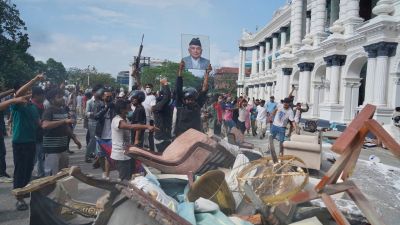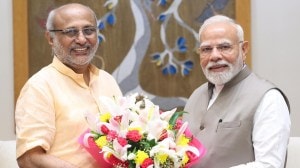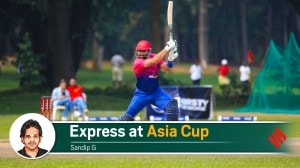Some Lines of No Control
What is bound to surprise any reader is the assertion that it was India that launched the offensive across the Line of Control and Pakistan ...

What is bound to surprise any reader is the assertion that it was India that launched the offensive across the Line of Control and Pakistan was only defending its territory; and that Vajpayee’s bus diplomacy to Lahore was part of a grand deception, a ‘‘camouflage’’ for India’s nasty little military plan!
One might have been tempted to ignore this short book from Pakistan as low-grade propaganda related to the Kargil War in the summer of 1999. But given that it is written by a London School of Economics graduate, a former university professor close to Pakistani military circles and now head of Pakistan’s government-sponsored premier strategic studies think tank, it merits attention. The central thrust of the book is to make an alibi for the Pakistani army and its leadership for the misadventure in Kargil.
One-fifth of the text is devoted to the conflict in the Siachen region to support Mazari’s thesis. She correctly records that the 1949 Karachi Agreement specified that the mutually agreed cease-fire line would run “north to the glaciers” from point NJ9842 at the southern foot of the Saltoro Range. But then we are enlightened by the information that when Pakistan signed the border agreement with China in 1963, illegally ceding nearly 6,000 sq km of territory in J&K, “alignment of the cease-fire line was seen (by Pakistan) as linking NJ9842 with the Karakoram Pass” to the East!
In the book the Kargil War is justified as a replay in reverse of the Siachen conflict, and apparently conducted with that motivation and model in view. When quizzed by the media on Kargil, even General Musharraf has linked it with Siachen more than once. According to Mazari, the primary objective of the Pakistan Army in Kargil was to hold on to the territory across the LoC till at least August that year so that India would be forced to negotiate its withdrawal from the Saltoro ridge/Siachen glacier as a quid pro quo for Pakistani withdrawal from the Kargil sector, and “dialogue on Kashmir”. It may be recalled that people like the former army chief, General Aslam Beg, were arguing on similar lines during the war. Contrary to conventional wisdom in India at that time, Mazari indicates that Prime Minister Nawaz Sharif had authorised the army’s plan starting with the joint political-military decision of November 1998 updated by at least eight meetings, many not far from the LoC in PoK between January and July 3, 1999. Except that the then information minister, Mushahid Hussein, was vacationing in the hills when the going got really tough in late June 1999!
On the other hand, she does recognise that Pakistan had no support from the international community, with the G-8 terming its efforts to change the status quo as “irresponsible”. The Chinese leadership made it bluntly clear to Pakistan that “it was not prepared to condone the Kargil action”. The US had “warned Pakistan” through General Zinni, and Bill Clinton asked Sharif to immediately pull out his forces from “Indian territory”. But the reason for their attitude is ascribed by the author to Indian propaganda.
Overall, the book makes tedious reading and is likely to tax the intelligence of even the most credulous. But it is an important text for anyone interested in Pakistan to understand how facts are distorted by its elites under the garb of separating fact from fiction, all to shape misperceptions.
Photos



- 01
- 02
- 03
- 04
- 05



























